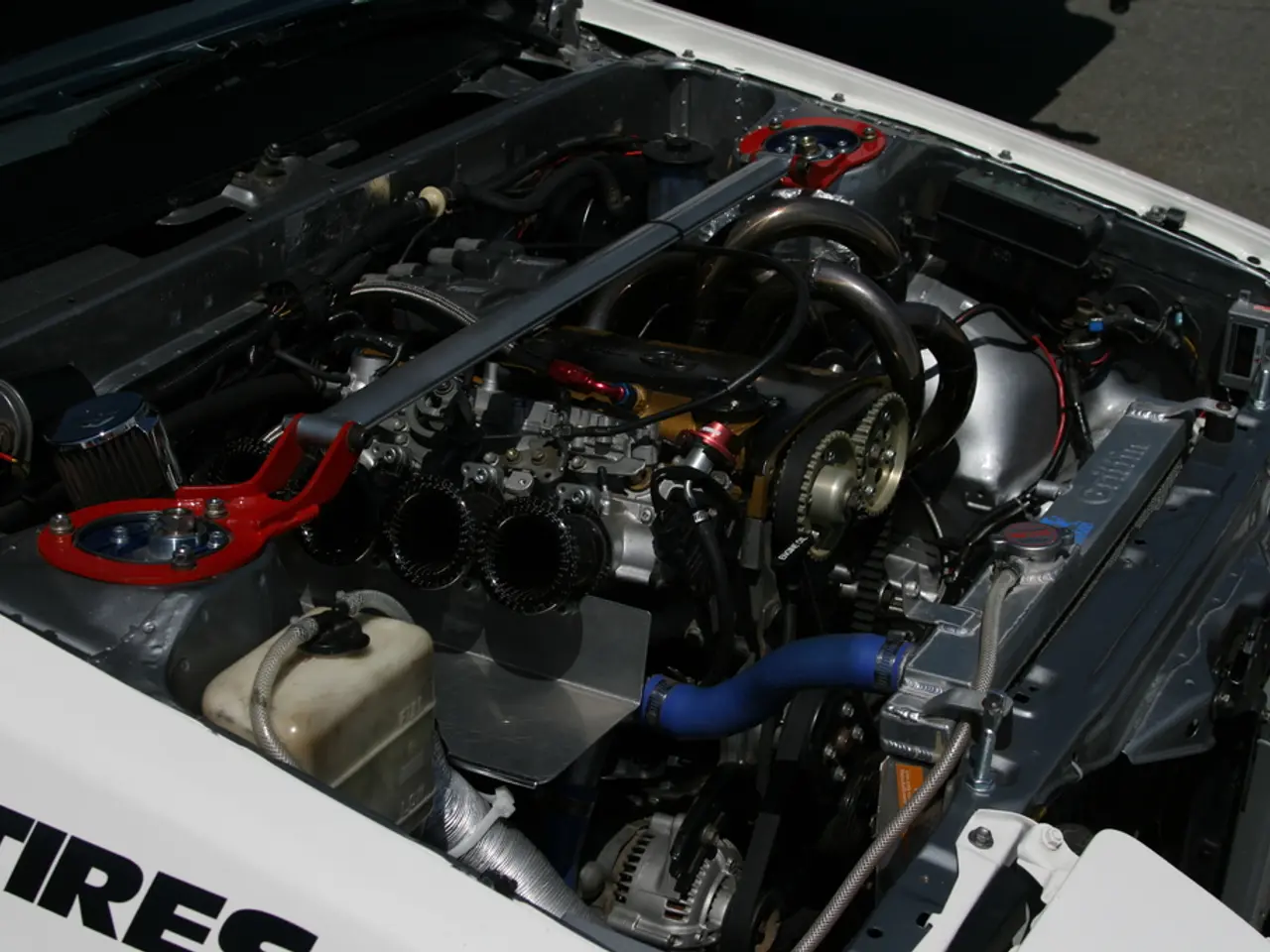Advancements in Long-Lasting, Affordable Battery Technology: England's Innovation Accelerates the Energy Sector Toward a Radiant Future
A groundbreaking development in the energy storage sector has emerged from a collaboration between a London-based institution, a chemical physics institute, and a leading global energy company. The innovative membrane technology, which has been in the works at University College London (UCL), promises to significantly enhance the efficiency and lifespan of vanadium redox flow batteries.
The heart of this new membrane technology is a hybrid structure that combines tungsten trioxide nanoparticles grown on single-layered graphene oxide sheets with a sandwich-structured perfluorinated sulfonic acid (PFSA) membrane reinforced with polytetrafluoroethylene (Teflon). This unique design addresses key challenges in traditional PFSA membranes by reducing vanadium ion crossover, enhancing proton transport, and delivering high coulombic and energy efficiency.
One of the significant advantages of this advanced membrane is its ability to prevent undesired ion mixing and improve proton flow, thereby boosting the efficiency and lifespan of vanadium redox flow batteries. This could lead to a more cost-effective and affordable energy storage solution, making grid-scale and renewable energy storage more viable and sustainable.
The unique structure of the new membranes also boosts ionic conductivity and chemical stability, enabling them to outperform traditional options. The research team is also looking into replacing certain components to further enhance the durability and strength of these membranes.
The use of sulfonated poly(ether ether ketone) (sPEEK) membranes is another key aspect of this innovation. Sulfonated poly(ether ether ketone) is a hydrocarbon alternative that aims to significantly cut down costs and lessen environmental impact. By using sPEEK membranes, redox flow batteries may encounter less regulatory burdens, encouraging broader adoption of these technological advancements.
The new membrane has already been successfully tested at current densities up to 500 mA/cm2, establishing records of performance during testing phases. Mass production could dramatically lower production costs and accelerate the adoption of these innovative technologies within the energy sector.
The partnership is planning to transition into mass manufacturing in collaboration with its institutional partners to meet growing demand. This new ion-exchange membrane could revolutionize the future of energy storage technology, potentially opening avenues for new applications in sectors demanding reliable and sustainable energy storage solutions such as smart grids and electric vehicles.
The collaboration may lay the groundwork for a new era of clean energy, offering a concrete solution to global environmental and energy challenges. As the world continues to grapple with the need for sustainable and efficient energy solutions, this innovative membrane technology represents a major step forward in redox flow battery development.
- The groundbreaking development in the energy storage sector, a result of collaboration between a London-based institution, a chemical physics institute, and a leading global energy company, involves research into a hybrid membrane technology that leverages both tungsten trioxide nanoparticles and sulfonated poly(ether ether ketone) (sPEEK) to enhance the efficiency and lifespan of vanadium redox flow batteries.
- This new membrane technology, with its design addressing key challenges in traditional membranes by reducing vanadium ion crossover, enhancing proton transport, and delivering high coulombic and energy efficiency, could lead to a more cost-effective and affordable energy storage solution, making grid-scale and renewable energy storage more viable and sustainable.
- The innovative use of sPEEK membranes, a hydrocarbon alternative, aims to significantly cut down costs and lessen environmental impact, potentially encouraging broader adoption of these membranes in the energy sector, and opening avenues for new applications in sectors demanding reliable and sustainable energy storage solutions such as smart grids and electric vehicles.




